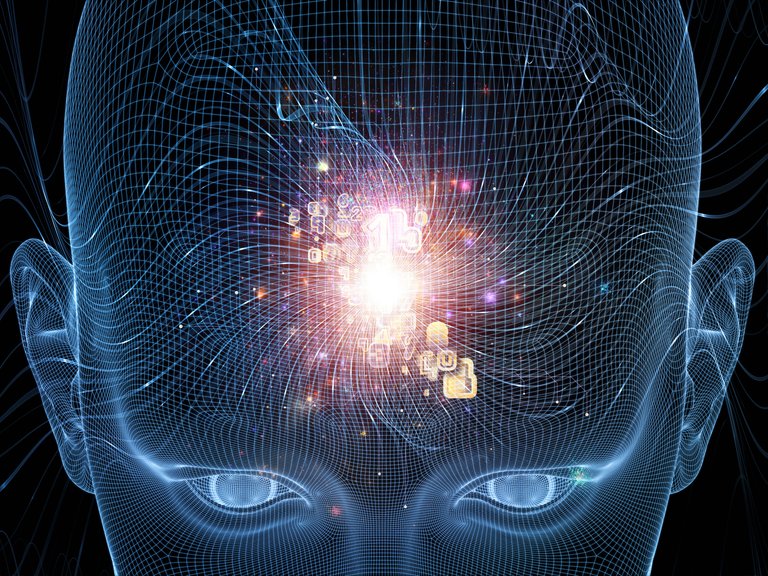- We use only 10 percent of our brains.

This one sounds so compelling – a precise number, repeated in pop culture for a century, implying that we have huge reserves of untapped mental powers. But the supposedly unused 90 percent of the brain is not some vestigial appendix. Brains are expensive – it takes a lot of energy to build brains during fetal and childhood development and maintain them in adults. Evolutionarily, it would make no sense to carry around surplus brain tissue. Experiments using PET or fMRI scans show that much of the brain is engaged even during simple tasks, and injury to even a small bit of brain can have profound consequences for language, sensory perception, movement or emotion.
True, we have some brain reserves. Autopsy studies show that many people have physical signs of Alzheimer’s disease (such as amyloid plaques among neurons) in their brains even though they were not impaired. Apparently we can lose some brain tissue and still function pretty well. And people score higher on IQ tests if they’re highly motivated, suggesting that we don’t always exercise our minds at 100 percent capacity.
- “Flashbulb memories” are precise, detailed and persistent.

We all have memories that feel as vivid and accurate as a snapshot, usually of some shocking, dramatic event – the assassination of President Kennedy, the explosion of the space shuttle Challenger, the attacks of September 11, 2001. People remember exactly where they were, what they were doing, who they were with, what they saw or heard. But several clever experiments have tested people’s memory immediately after a tragedy and again several months or years later.
The test subjects tend to be confident that their memories are accurate and say the flashbulb memories are more vivid than other memories. Vivid they may be, but the memories decay over time just as other memories do. People forget important details and add incorrect ones, with no awareness that they’re recreating a muddled scene in their minds rather than calling up a perfect, photographic reproduction.
- It’s all downhill after 40 (or 50 or 60 or 70).

It’s true, some cognitive skills do decline as you get older. Children are better at learning new languages than adults – and never play a game of concentration against a 10-year-old unless you’re prepared to be humiliated. Young adults are faster than older adults to judge whether two objects are the same or different; they can more easily memorize a list of random words, and they are faster to count backward by sevens.
But plenty of mental skills improve with age. Vocabulary, for instance – older people know more words and understand subtle linguistic distinctions. Given a biographical sketch of a stranger, they’re better judges of character. They score higher on tests of social wisdom, such as how to settle a conflict. And people get better and better over time at regulating their own emotions and finding meaning in their lives.
- We have five senses.

Sure, sight, smell, hearing, taste and touch are the big ones. But we have many other ways of sensing the world and our place in it. Proprioception is a sense of how our bodies are positioned. Nociception is a sense of pain. We also have a sense of balance – the inner ear is to this sense as the eye is to vision – as well as a sense of body temperature, acceleration and the passage of time.
Compared with other species, though, humans are missing out. Bats and dolphins use sonar to find prey; some birds and insects see ultraviolet light; snakes detect the heat of warmblooded prey; rats, cats, seals and other whiskered creatures use their “vibrissae” to judge spatial relations or detect movements; sharks sense electrical fields in the water; birds, turtles and even bacteria orient to the earth’s magnetic field lines.
By the way, have you seen the taste map of the tongue, the diagram showing that different regions are sensitive to salty, sweet, sour or bitter flavors? Also a myth.
- Brains are like computers.

We speak of the brain’s processing speed, its storage capacity, its parallel circuits, inputs and outputs. The metaphor fails at pretty much every level: the brain doesn’t have a set memory capacity that is waiting to be filled up; it doesn’t perform computations in the way a computer does; and even basic visual perception isn’t a passive receiving of inputs because we actively interpret, anticipate and pay attention to different elements of the visual world.
There’s a long history of likening the brain to whatever technology is the most advanced, impressive and vaguely mysterious. Descartes compared the brain to a hydraulic machine. Freud likened emotions to pressure building up in a steam engine. The brain later resembled a telephone switchboard and then an electrical circuit before evolving into a computer; lately it’s turning into a Web browser or the Internet. These metaphors linger in clichés: emotions put the brain “under pressure” and some behaviors are thought to be “hard-wired.” Speaking of which…
- The brain is hard-wired.

This is one of the most enduring legacies of the old “brains are electrical circuits” metaphor. There’s some truth to it, as with many metaphors: the brain is organized in a standard way, with certain bits specialized to take on certain tasks, and those bits are connected along predictable neural pathways (sort of like wires) and communicate in part by releasing ions (pulses of electricity).
But one of the biggest discoveries in neuroscience in the past few decades is that the brain is remarkably plastic. In blind people, parts of the brain that normally process sight are instead devoted to hearing. Someone practicing a new skill, like learning to play the violin, “rewires” parts of the brain that are responsible for fine motor control. People with brain injuries can recruit other parts of the brain to compensate for the lost tissue.
- A conk on the head can cause amnesia.

Next to babies switched at birth, this is a favorite trope of soap operas: Someone is in a tragic accident and wakes up in the hospital unable to recognize loved ones or remember his or her own name or history. (The only cure for this form of amnesia, of course, is another conk on the head.)
In the real world, there are two main forms of amnesia: anterograde (the inability to form new memories) and retrograde (the inability to recall past events).
Science’s most famous amnesia patient, H.M., was unable to remember anything that happened after a 1953 surgery that removed most of his hippocampus. He remembered earlier events, however, and was able to learn new skills and vocabulary, showing that encoding “episodic” memories of new experiences relies on different brain regions than other types of learning and memory do. Retrograde amnesia can be caused by Alzheimer’s disease, traumatic brain injury (ask an NFL player), thiamine deficiency or other insults. But a brain injury doesn’t selectively impair autobiographical memory – much less bring it back.
- We know what will make us happy.

In some cases we haven’t a clue. We routinely overestimate how happy something will make us, whether it’s a birthday, free pizza, a new car, a victory for our favorite sports team or political candidate, winning the lottery or raising children. Money does make people happier, but only to a point – poor people are less happy than the middle class, but the middle class are just as happy as the rich. We overestimate the pleasures of solitude and leisure and underestimate how much happiness we get from social relationships.
On the flip side, the things we dread don’t make us as unhappy as expected. Monday mornings aren’t as unpleasant as people predict. Seemingly unendurable tragedies – paralysis, the death of a loved one – cause grief and despair, but the unhappiness doesn’t last as long as people think it will. People are remarkably resilient.
We see the world as it is.

We are not passive recipients of external information that enters our brain through our sensory organs. Instead, we actively search for patterns (like a Dalmatian dog that suddenly appears in a field of black and white dots), turn ambiguous scenes into ones that fit our expectations (it’s a vase; it’s a face) and completely miss details we aren’t expecting. In one famous psychology experiment, about half of all viewers told to count the number of times a group of people pass a basketball do not notice that a guy in a gorilla suit is hulking around among the ball-throwers.
We have a limited ability to pay attention (which is why talking on a cellphone while driving can be as dangerous as drunk driving), and plenty of biases about what we expect or want to see. Our perception of the world isn’t just “bottom-up” – built of objective observations layered together in a logical way. It’s “top-down,” driven by expectations and interpretations.Men are from Mars, women are from Venus.

Some of the sloppiest, shoddiest, most biased, least reproducible, worst designed and most overinterpreted research in the history of science purports to provide biological explanations for differences between men and women. Eminent neuroscientists once claimed that head size, spinal ganglia or brain stem structures were responsible for women’s inability to think creatively, vote logically or practice medicine. Today the theories are a bit more sophisticated: men supposedly have more specialized brain hemispheres, women more elaborate emotion circuits. Though there are some differences (minor and uncorrelated with any particular ability) between male and female brains, the main problem with looking for correlations with behavior is that sex differences in cognition are massively exaggerated.
Women are thought to outperform men on tests of empathy. They do – unless test subjects are told that men are particularly good at the test, in which case men perform as well as or better than women. The same pattern holds in reverse for tests of spatial reasoning. Whenever stereotypes are brought to mind, even by something as simple as asking test subjects to check a box next to their gender, sex differences are exaggerated. Women college students told that a test is something women usually do poorly on, do poorly. Women college students told that a test is something college students usually do well on, do well. Across countries – and across time – the more prevalent the belief is that men are better than women in math, the greater the difference in girls’ and boys’ math scores. And that’s not because girls in Iceland have more specialized brain hemispheres than do girls in Italy.
Certain sex differences are enormously important to us when we’re looking for a mate, but when it comes to most of what our brains do most of the time – perceive the world, direct attention, learn new skills, encode memories, communicate (no, women don’t speak more than men do), judge other people’s emotions (no, men aren’t inept at this) – men and women have almost entirely overlapping and fully Earth-bound abilities.
Hi! I am a robot. I just upvoted you! I found similar content that readers might be interested in:
http://www.smithsonianmag.com/science-nature/top-ten-myths-about-the-brain-178357288/
Congratulations @richereveryday! You have completed some achievement on Steemit and have been rewarded with new badge(s) :
Click on any badge to view your own Board of Honor on SteemitBoard.
For more information about SteemitBoard, click here
If you no longer want to receive notifications, reply to this comment with the word
STOP